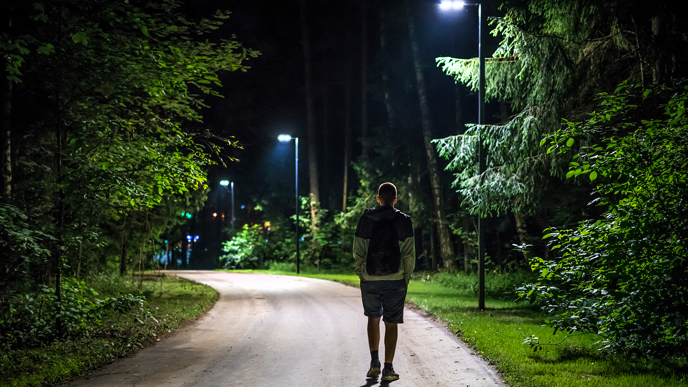
NorDark
KEY POINTS- Making green spaces accessible after dark without disturbing wildlife and ecological needs
Project overview
Participants
More related research
Global goals
- 3. Good health and well-being
- 11. Sustainable cities and communities
- 15. Life on land
Short summary
The project develops new knowledge - crucial for designing sustainability in urban environments after dark.
Parks of various sizes are a vital part of any well-functioning city infrastructure. Related urban development and design, at its various scales, has evolved putting human needs and interests first. Awareness is growing that, in order to further develop in a sustainable way, we need to balance human needs with the needs of nature. Education and Policymaking play crucial roles here to facilitate and initiate responsible practices.
One conflict area relevant world-wide, but particularly in Nordic countries, is the introduction of electrical light in after-dark outdoor environments, and the impact it has on flora, fauna, and energy use, as well as human behaviour and well-being in the impacted areas and beyond.
How can we design urban environments in a way that meets the needs of both humans and other species fairly? How can innovative lighting technology – with adjustable light spectrum, intensity, and direction – support human activity after dark without disturbing wildlife and ecological needs?
Our strategy is to bring together relevant disciplines by uniting representatives from design, technology, psychology, and ecology. This interdisciplinary group, consisting of researchers and practitioners, has been formed around a shared interest in developing methods and guidelines that balance the needs of nature and humans in urban environments. We aim to highlight how small green oases in the heart of the city – so-called 'green pockets' – can contribute to increased safety, well-being, and sustainable development.
In this project, we focus on:
How we can improve access to public green spaces for different groups in society.
How education and smart policy decisions can raise awareness and inspire sustainable choices.
How we can encourage more people – both individuals and organizations – to adopt sustainable practices.
How digital tools, such as digital twins, can help us account for the value of nature in urban planning – for example, biodiversity and ecosystem services.
The goal is to develop knowledge, methods, and tools that make it easier to plan cities where both people and nature can thrive – and feel well.